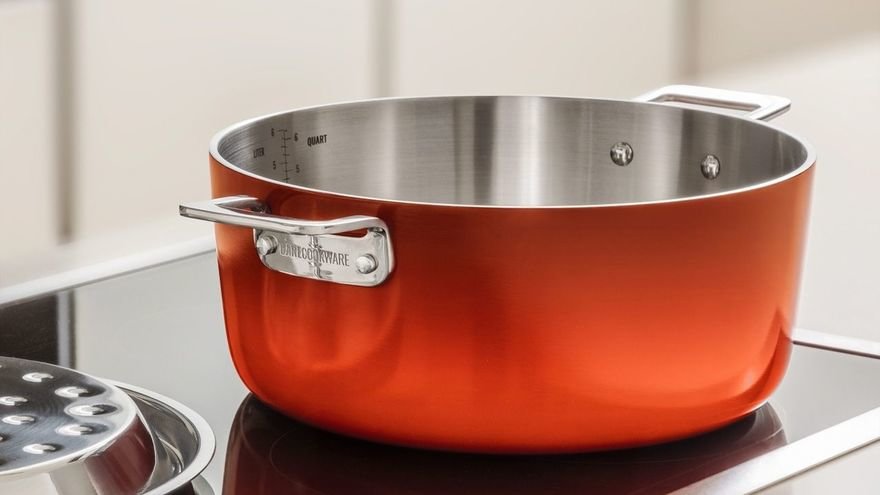BARE Designs a Better—and Less Expensive—Dutch Oven
A host of UX improvements
The original promise of industrial design, as a profession, was to apply intelligent design decisions and an advanced understanding of materials to create better products that are affordable for the masses. In practice, we haven't seen much of this lately; as prices soar, objects with superior design tend to be much pricier than the incumbent designs.
Well, here's one refreshing difference. Dutch company BARE Cookware aims to use modern materials to improve the design—and price—of cooking utensils. Their BARE Dutch Oven, recently posted to Kickstarter, does away with the pain points of traditional Dutch ovens, while coming in at a fraction of the price.

The traditional Dutch oven, invented in the 1700s, was made out of cast iron. This was a good choice for the time, as the production method was widely available. In the 1800s the innovation of an enamel finish was added, which prevented the vessel from rusting or reacting to acidic foods.
The pain points are twofold. The first is that cast iron, while possessing excellent heat retention, is extremely heavy. This makes it tricky to handle, particularly when it's searingly hot. The second is that the enamel finish is brittle and easily damaged. Once chipped, the damage tends to spread, and chipped enamel on Dutch ovens cannot be repaired.
BARE has done away with both pain points. By using a two-ply construction—a 5mm-thick aluminum core and stainless steel for the cooking surface--they've created a much lighter vessel with similar heat retention properties to a traditional Dutch oven, but without the hotspots.



Being that the interior is stainless steel, there's no enamel to damage, and it's dishwasher-safe. Other nice UX touches include wide handles, less draft angle for more cooking surface and measurement tickmarks on the interior.


Best of all is that these added conveniences come at a reduced cost, compared to premium brands. A Dutch oven from Le Creuset or Staub can run from the mid-$300s to over $500. BARE's offering is going for $148 on Kickstarter, where it's been a smash hit, landing $610K in pledges and counting. At press time there was 22 days left to pledge, and they expect to ship in November.
Enter a caption (optional)
-
oFavorite This
-
Q4Comment
K
{Welcome
Create a Core77 Account
Already have an account? Sign In
By creating a Core77 account you confirm that you accept the Terms of Use
K
Reset Password
Please enter your email and we will send an email to reset your password.


Comments
It's… a pot
Cast iron pots were the technological advancement to hand beaten, tinned, copper pots, or riveted plate iron pots. The technological advancement from cast iron, were cast aluminium, which is lighter, and have superior heat conduction (meaning no hot spot at the bottom.) the downside, was that aluminium is toxic. The stainless steel pot with a sandwich bottom, which means that there is a copper disc between two sheets of stainless steel, which is there because of coppers high thermal conductivity, which makes the temperature even, and reduces the risk of burning the food, is the latest technological advancement. Now some of them include an iron layer below the copper, to work on induction stoves. All this article is saying, is that a 50 year old technology, is better than a 250 year old technology. (Don't really know the numbers, it's just a rough guess.) Because the technology is 50 years old there are plenty of high quality seconds hand pots available for next to nothing. Meaning when it comes to expense, you can have the best for the cheapest. Cast iron pots are like vinyl music. It's value is in it's materiality, not it's on-paper performance. Meaning that people who like cast iron, will not buy a stainless steel sandwich design, for the simple reasons, that this is what they owned, before they bought their cast iron.
I'll take the $30 cast iron any time.
I bought a cast iron one for under $30, it's great.